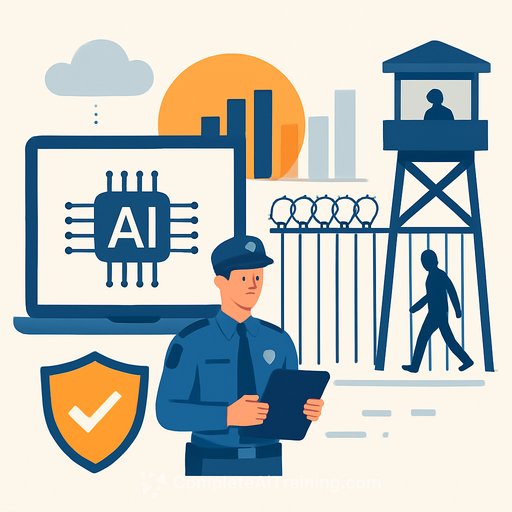Intelligence-Led Border Operations: Move From Data Overload to Action
U.S. border security teams are drowning in data while threats get smarter and public scrutiny gets tighter. The answer isn't "more tools." It's integrated data, clear standards, and AI that turns noise into direction.
Zach Beus, national security lead at i2 Group and a former intelligence officer, puts it plainly: the issue isn't size alone. It's the speed and fragmentation. Agencies have unprecedented information, but it lives in silos that slow decisions.
Break the silos, speed the decision
CBP, ICE, and partner agencies collect manifests, travel records, sensor feeds, financial intel, and social media. Much of it stays isolated. That's the bottleneck.
Shift from disconnected systems to platforms that integrate structured, semi-structured, and unstructured data. Federated search matters here. As Beus notes, analysts shouldn't have to run the same query across a dozen systems to confirm one identity. That's time lost and risk added.
What AI should actually do for your team
AI isn't the analyst. It's the force multiplier. Machine learning and NLP can automate entity resolution, link analysis, and pattern detection so humans can focus on intent, context, and outcomes.
As Beus frames it: AI moves the job from "find the needle" to "explain why the needle matters." That's how you get proactive instead of reactive.
- Triaging large data sets to surface anomalies and high-risk links
- Auto-extracting entities and relationships from reports and messages
- Detecting patterns across manifests, travel histories, and sensor activity
- Reducing duplicate work with reliable identity resolution
Standards before scale
Moving fast without governance creates legal and operational exposure. Beus is clear: sooner or later, a court will ask how an AI-supported conclusion was reached. You need one way of working across teams and jurisdictions.
- Document data lineage and model usage for every analytic product
- Maintain audit logs: inputs, transformations, parameters, outputs
- Adopt explainability frameworks and require human review for critical decisions
- Define acceptable use policies for data sources (social, financial, open-source)
Industry leaders echo this. Transparency and standardization protect trust and results. See the Cloud Security Alliance for current guidance and research on AI and security best practices: Cloud Security Alliance.
Do more with the people you have
AI shifts work, it doesn't replace the mission. If it once took 100 analysts to sift manifests, it might now take 10. That frees 90 people to focus on long-term threats, strategic assessments, and cross-border coordination.
For operations leaders, that's the real win: reallocate talent to higher-impact problems without adding headcount.
Tools that meet analysts where they work
i2 Group is updating Analyst's Notebook to reduce manual effort and improve collaboration. The direction is simple: make analysts spend less time on data wrangling and more time on judgments.
- Natural Language Processing: Drag-and-drop documents; auto-extract entities, links, and properties.
- Automated Insights: Normalize spreadsheets and visualize instantly; highlight critical connections with out-of-the-box dashboards.
- Geospatial Mapping: Visualize movements of phones, vehicles, or people to spot trafficking and migration patterns in near real time.
The outcome: faster visualizations, easier sharing (files, slides, wall maps), and less context switching across systems.
Partnerships that actually work in the field
No single vendor solves border operations. Missions are too varied and the tech stack spans decades. Beus emphasizes ecosystems: combine AI and graph analytics with the ability to connect legacy and modern systems under real constraints.
Pick partners who have done hard integration work before. Speed matters, but reliability keeps you online when it counts.
An operations playbook you can run this quarter
- Inventory data sources and access paths; cut duplicate systems and shadow databases.
- Stand up a data integration layer with federated search across key repositories.
- Pilot one AI use case (entity resolution or manifest triage) with clear KPIs.
- Codify governance: data lineage, model cards, audit logging, escalation thresholds.
- Train analysts and supervisors on new workflows and decision checks.
- Integrate geospatial views for movement analysis tied to alerts.
- Review legal counsel on AI use, retention, and disclosure requirements.
- Measure cycle-time reduction, false-positive rates, and analyst hours reallocated.
- Scale to adjacent use cases once standards and metrics are stable.
Why this matters now
Data volume will keep growing. Threat actors will adapt. Public expectations for accuracy and accountability won't ease up.
The path forward is clear: integrate your data, apply AI where it removes repetitive labor, and lock in standards that stand up to scrutiny. Support the analysts. They're the edge.
Further resources
- Cloud Security Alliance: AI and Security research
- Complete AI Training: Courses by job for building AI-ready ops teams
Your membership also unlocks:






